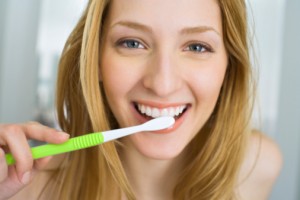 Lately it seems like there’s nothing that hasn’t been touched by advancements in technology. Friendships are facilitated by social networks, and you can now even avoid a trip to the grocery store by ordering online in Port Orange. I don’t want to sound like a luddite — I love my smart phone as much as anyone else — but sometimes it seems like things are moving a little too fast.
Lately it seems like there’s nothing that hasn’t been touched by advancements in technology. Friendships are facilitated by social networks, and you can now even avoid a trip to the grocery store by ordering online in Port Orange. I don’t want to sound like a luddite — I love my smart phone as much as anyone else — but sometimes it seems like things are moving a little too fast.
There’s one thing that hasn’t changed much over the past few decades, though, and that’s the way we clean our teeth. There are two options, manual and electric toothbrushes, and one really is just as good as the other — it’s all in the way they’re used. Let’s take a look and see what the differences are, exactly.
Electric Toothbrushes
One of the biggest advantages of electric toothbrushes is that they usually come with a built-in timer to ensure you’re getting a full two minutes, every time you brush. Some even indicate when you should switch quadrants, so that your whole mouth is getting a thorough clean.
Electric toothbrushes also fight the common human condition: laziness. Most of us cut corners when we’re doing daily chores like brushing our teeth — but your electronic toothbrush gets into the hard-to-reach places without your even realizing it.
Manual Toothbrushes
Manual, or “ordinary” toothbrushes, are just what they sound like — ones that don’t have a battery or removable head. These are what you find in the drugstore for about $5, and while they may seem like they wouldn’t do a great job brushing, the truth is that, when used properly, they’re just as good as an electric toothbrush. The key is knowing how to use them.
Proper manual brushing techniques
To make sure you’re getting an equally good brush with your manual toothbrush, watch the angle at which you’re brushing. It should be 45 degrees, so that you can roll the brush from the top of the gum down the tooth. And make sure you’re brushing softly, in small circles rather than hard brushing from side to side — that can lead to scrapes and gum recession, two factors in gum disease.
The biggest mistake people make in using manual brushes is not putting in the proper time — but that’s easy to fix with a stopwatch or the timer on your phone. Brush for two minutes, twice a day, focusing on each quadrant of your mouth for 30 seconds, and you’ll be getting the same excellent clean as anyone else.
Don’t Forget: Visit Your Dentist Regularly
Equally important to a consistent brushing schedule is visiting your dentist every six months. This appointment is your chance to make sure you’re not missing any steps in your oral hygiene routine — and to catch problems early, while they’re easiest to fix. If it’s been more than six months since your last dental checkup, don’t wait to schedule one today.
